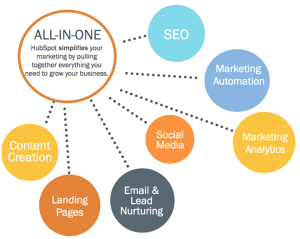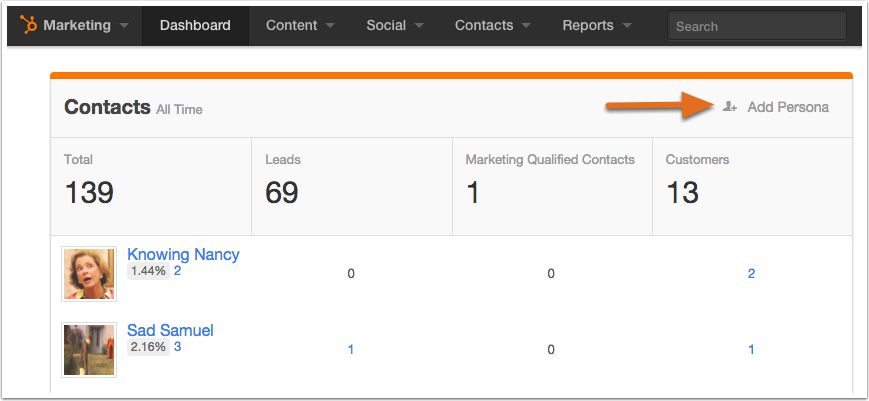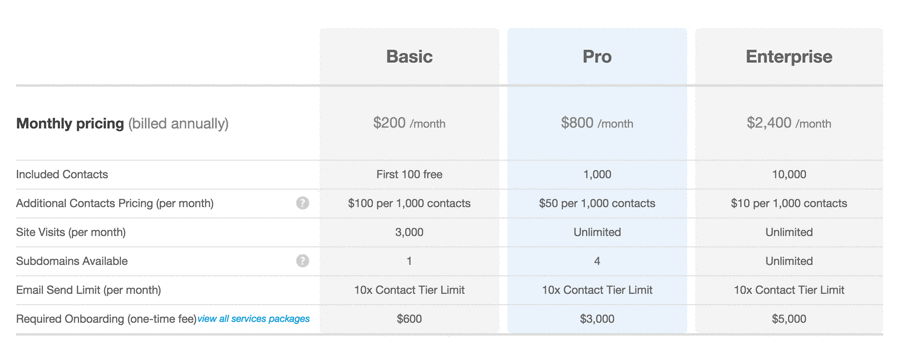 Hubspot is an inbound marketing platform with social media marketing, email marketing, content management, basic web analytics and user tracking features. Similar to Pardot by Salesforce, Hubspot allows companies to manage multiple marketing channels in one spot, which is especially efficient for businesses with a large number of prospects or customers.
Hubspot is an inbound marketing platform with social media marketing, email marketing, content management, basic web analytics and user tracking features. Similar to Pardot by Salesforce, Hubspot allows companies to manage multiple marketing channels in one spot, which is especially efficient for businesses with a large number of prospects or customers.
Unlike many standalone marketing software or apps, such as social media management tools, email platforms or content management systems that are free or freemium, Hubspot is a premium platform that starts at $200/month. Is paying this price worth it? Here is an overview of the advantages and disadvantages of Hubspot to help you decide.
Pros of Hubspot
1. Personas
Being an inbound marketing software platform, Hubspot centers many of its features on buyer personas, which are generalized profiles that help marketers understand and classify customers better. You can create personas, assign contacts personas and you can create lists or campaigns for specific personas. After you create a persona, four lists are automatically be generated for that specific persona: all contacts, marketing qualified leads, leads, and customers with that persona. This is essential, because the campaigns and content you send to decision makers vs. influencers may be very different.

2. Campaign Management
When you are using separate systems for your marketing campaigns, such as separate platforms for blogging, email marketing and social media, it can be hard to aggregate results. With Hubspot, not only can you set up these marketing activities, you can set up specific campaigns and assign updates to a campaign. For example, you can assign specific emails or social media updates to a campaign so that you can view all the activities associated with a particular campaign.
3. Detailed Prospect Tracking
Hubspot’s integrated tracking allows you to aggregate all of a prospect’s activities into one spot, such as visits to pages on your website, clicks on emails, conversions on landing pages and social media interactions. This gives a more complete view about each prospect and what content they interacted with on your website.

Cons of Hubspot
1. Training Fees
In addition to paying a monthly fee for the platform (plans start at $200/month, $800/month and $2,400/month), new customers are required to pay a minimum of $600 to $5,000, depending on their plan, for initial training. This required fee may not be an issue for companies with larger marketing and sales budgets, for could be a big obstacle for smaller companies or startups.

2. A/B Testing Only Available To Enterprise Subscribers ($2,400/month)
A/B testing is an essential tool for optimizing email campaigns and for landing pages. In Hubspot, only the Enterprise subscription plan, which is their top tier plan with pricing starting at $2,400/month, has this feature. In comparison, email marketing services like Mailchimp, which start at $10/month, includes A/B testing features, while landing page apps such as Unbounce which costs $49-$199/month has A/B testing tools as well.
3. Customizations Can Be Challenging
Unlike other content management systems, such as WordPress many plugins are available for extra functionality such as basic popovers or slide-ins on blog posts to collect emails, these basic additions require custom coding in Hubspot. Making customizations to email templates is also more complex than other email programs, like MailChimp which lets you drag and drop right in the email campaign.
Conclusion
A premium all-in-one inbound marketing platform like Hubspot may be a good fit for your company if you have the budget (starting at $200/month) and you have a number of prospects to track. If you don’t have the budget, or you’re only getting started with select inbound marketing, you can also use free or freemium standalone platforms like Hootsuite for social media, MailChimp for newsletters, WordPress for content management and Google Analytics for web analytics.
To learn more about inbound marketing and inbound marketing tools, download our free white paper.
